Navine G.Dossos presents ‘Kind Words Can Never Die’
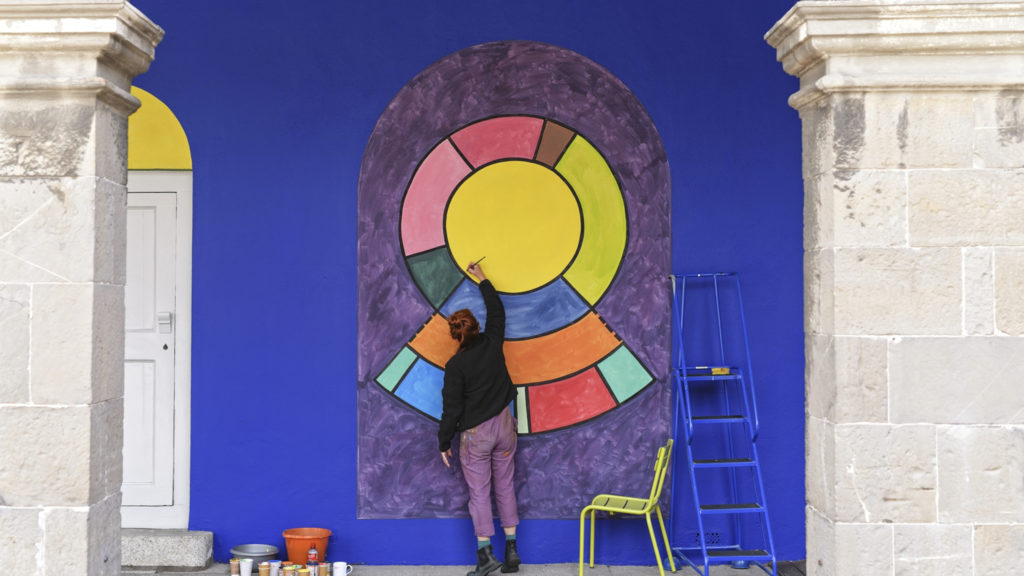
Kind Words Can Never Die is a visually stunning new site-specific installation created by Navine G. Dossos for IMMA’s iconic 17th century Courtyard. Commissioned as part of IMMA Outdoors, Kind Words Can Never Die transforms the colonnades of the Courtyard with a vibrant mural wall painting. In this artist blog Dossos shares the evolution of this project from exploratory workshops to the resulting striking visuals.
…………………………………………………………………………………………………………………………………
The Courtyard of IMMA is a very special place, with its own complex history as the Royal Hospital of Kilmainham. It is also a place that hosts many possibilities for the present and the future of the building, through performances and music, to the simple act of having a cup of tea with a friend in the colonnades. As the Earth Rising Eco-Festival was planned for Autumn 2022, I wanted to make a work that aligned with this important event, allowing me to explore new psychological states that have emerged in response to a greater awareness of global and local climate change. As the Courtyard is a public space, I wanted the work that I made in it to be driven by a collaborative process with members of the public who are part of IMMA’s community.
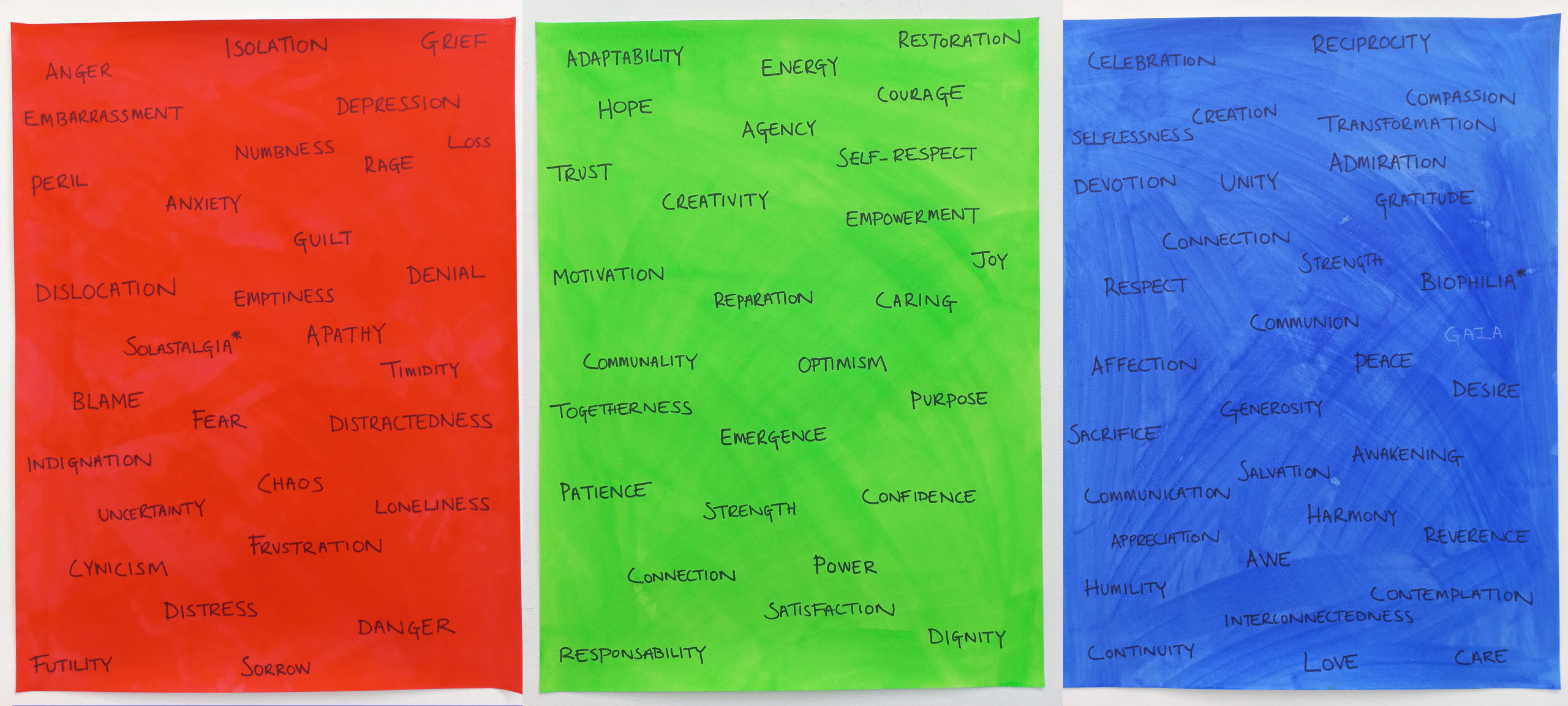
One of the influences on my research was the book Earth Emotions (2019) by Glenn Albrecht, which looks at creating new terms for the complex emotions and feelings that people encounter in relation to climate change, suggesting words such as Solastalgia and Biophilia as expressions of psychological states directly linked to the environment. Whilst the book looked at many negative feelings such as depression, anger, anxiety and apathy, there was also a lot of space dedicated to the importance of being able to move through these difficult emotions, accessing feelings of agency and possibility, and even finding love and reverence for the Earth.

My second influence for the project was Annie Besant and C.W. Leadbeater’s Thought Forms (1901). These two members of the Theosophist Society conducted a series of experiments to generate colours and shapes to express emotions as objects in the world. This very interior work, done through the medium of clairvoyance, gave rise to a series of images but also a colour palette that has influenced many artists over the years. It became clear to me that there might be a way to use this method of the Thought Forms to encourage a way to make new colours and images about climate change that are driven by feelings rather than scientific data.
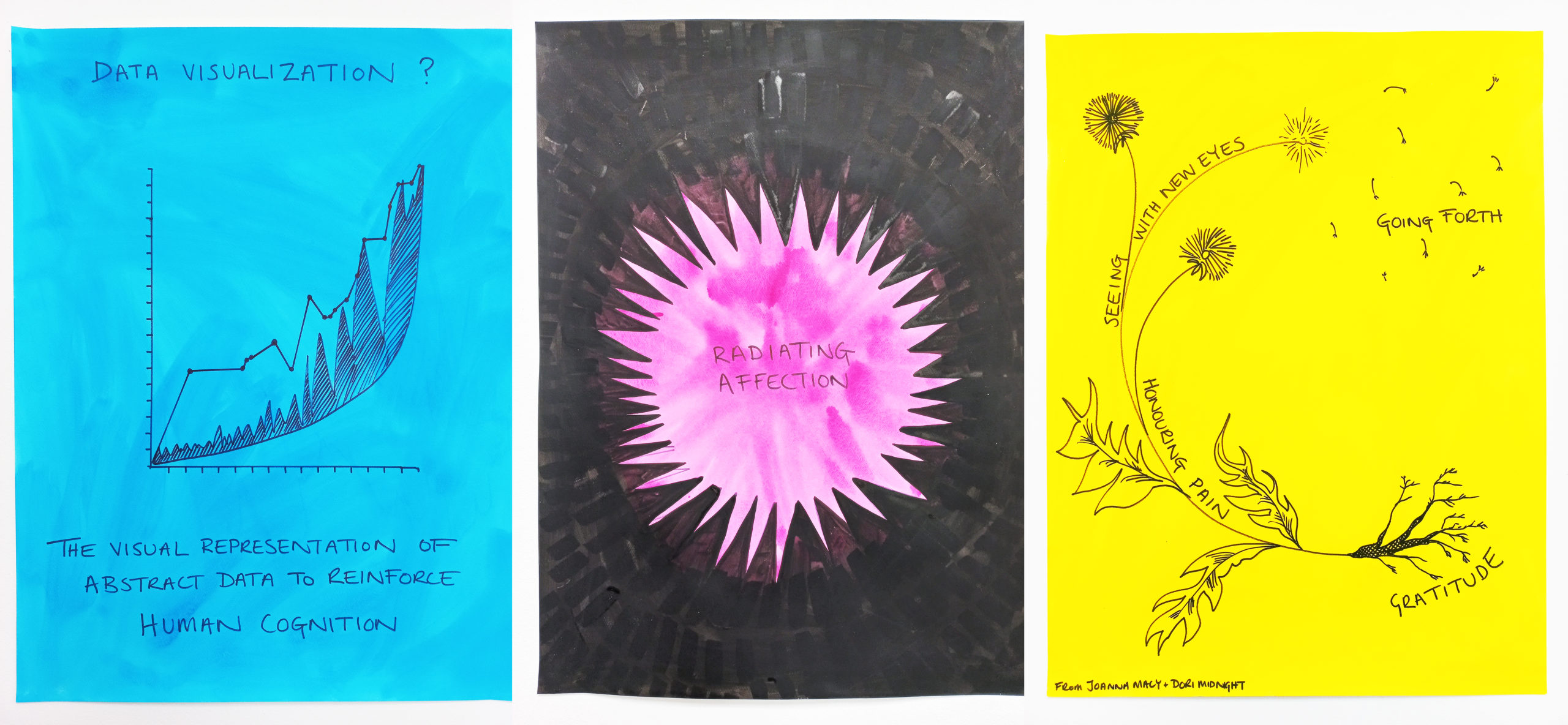
One of the major issues of addressing climate change is how we visually represent it. We rely heavily on photographs to evidence the drama of ecological degradation, but also on data-driven charts, informational diagrams and other schematic representations to describe something that is almost intangible in our everyday lives. During my research period I collected many data visualizations and graphs about climate change, and stripped these images of their content (numbers and words) leaving them as simple line drawings that could be repopulated in our workshops to make new visual representations of our emotional relationship to climate crisis.
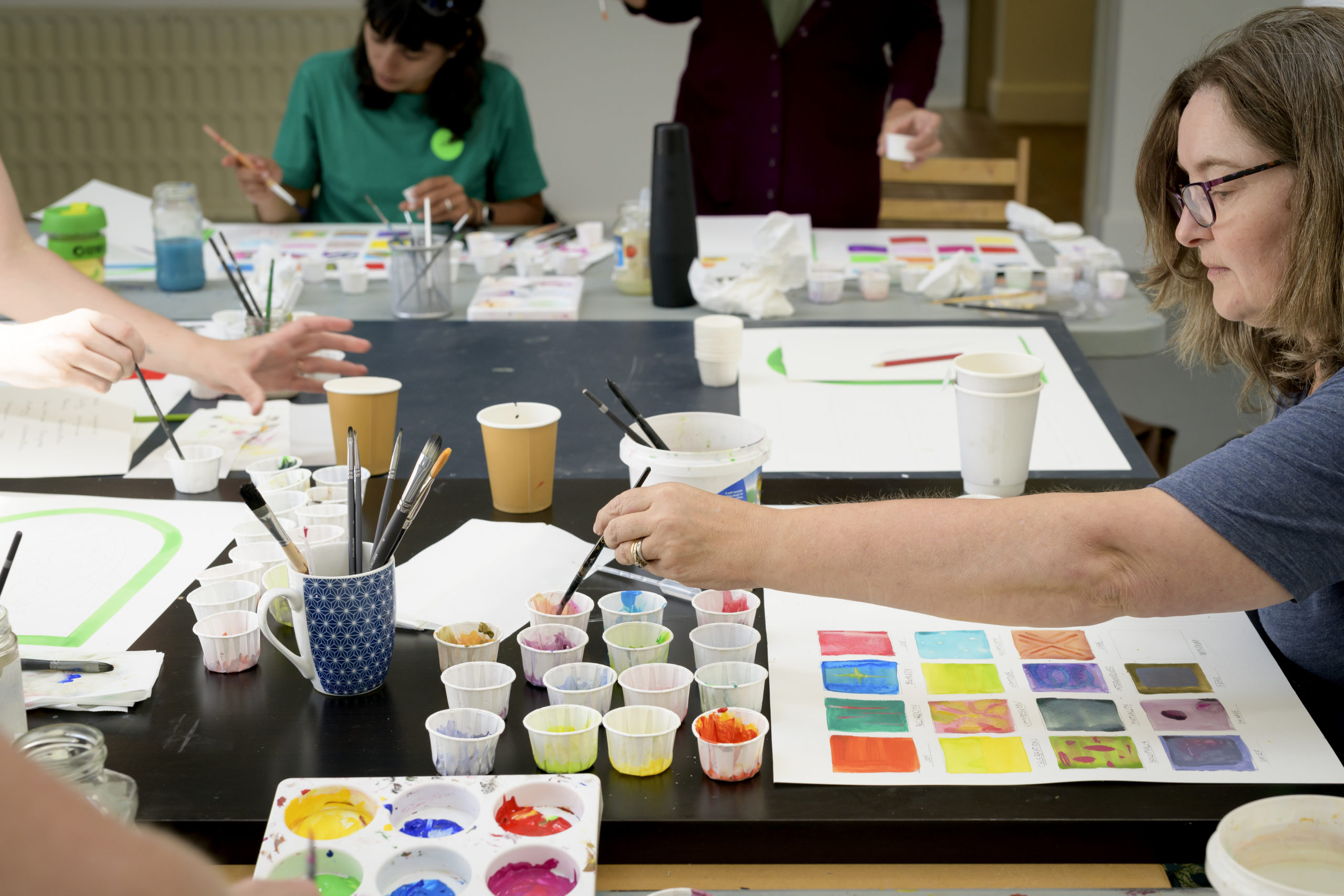
I held three workshops in July 2022 to develop content for the murals. I opened each workshop with a meditation by Joanna Macy (whose work has been deeply influential on my own thinking) to ground us in the space[i] and focus our attentions. In the morning each participant chose sixteen words from a collection of feelings and emotions I had put together through my research. We looked into ourselves to see if we could find colours and textures that described these states in a visual manner. Each person generated their own palette of colours and feelings that was unique to them.
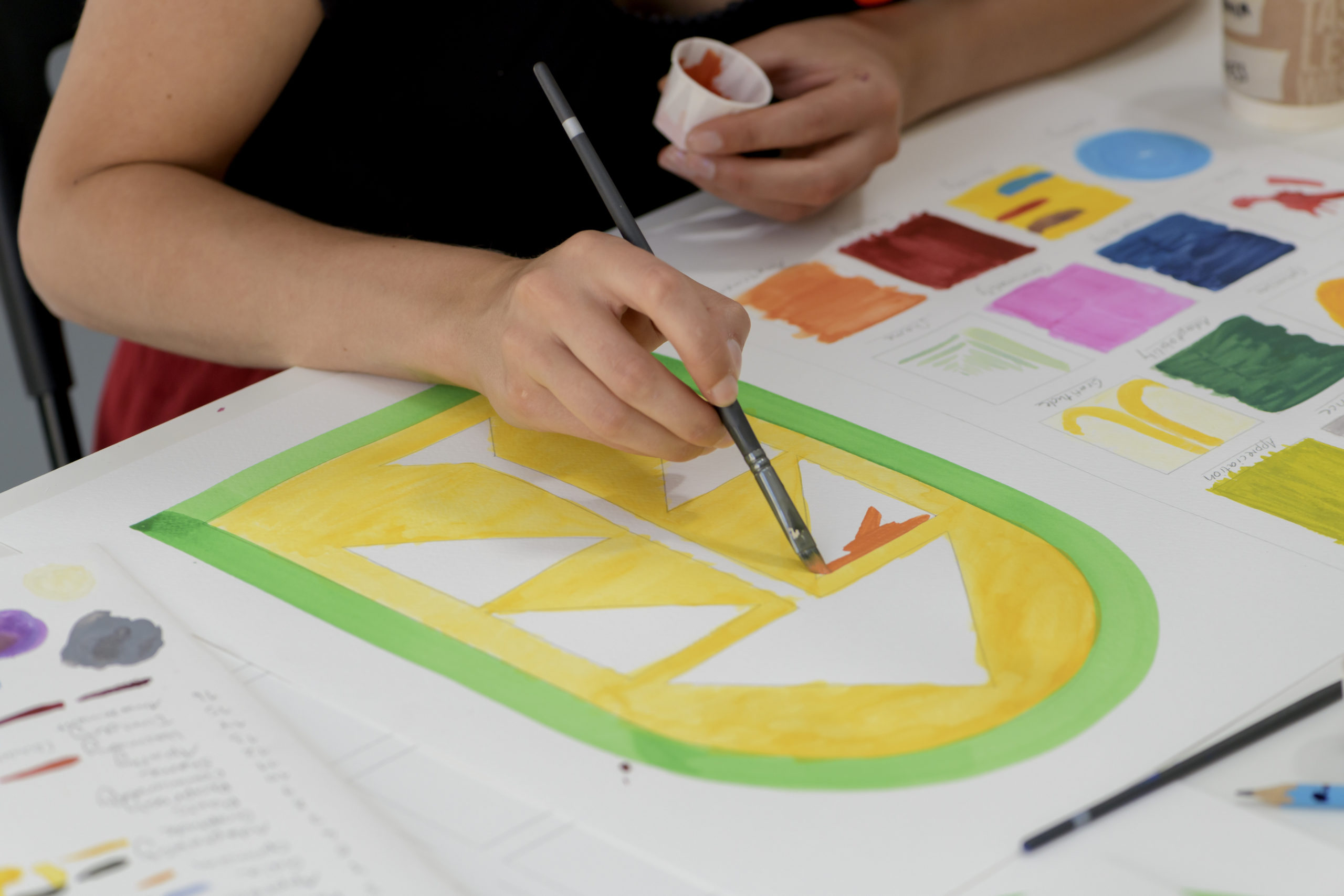
In the afternoon, we used our personal colour palettes to re-populate in the empty graph and data visualization drawings I had prepared from my research. This process was about how we could use the colours to describe an emotional journey through climate crisis. Every participant thought about how we might honour the pain we feel about ecological degradation, but also go forth with feelings of possibility and respect for the planet to implement change. During the workshops we also listened to a soundtrack I compiled with songs relating to ecology and climate, from Ursula Le Guin to Samsa, which is available for everyone to access[i].
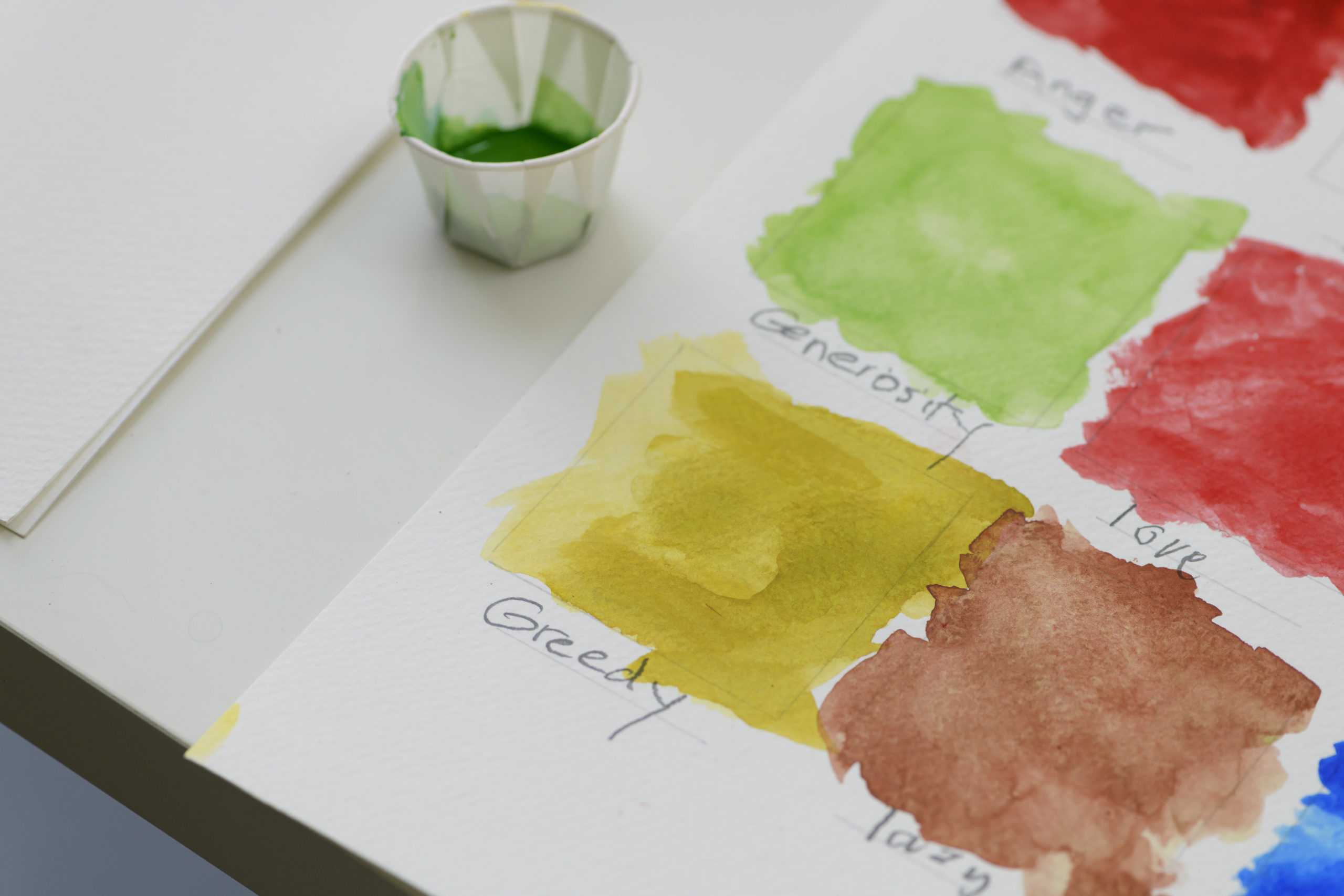
During the workshop we worked with the same paint that I was using to make the murals in the courtyard. I used only about seven litres of paint for all the workshops and murals, being as economical as I could with my materials. As my paint had a petrochemical base (acrylic), and I was unable to find a more ecological paint for the production, I felt it was important to be mindful with our materials and as sparing as possible.
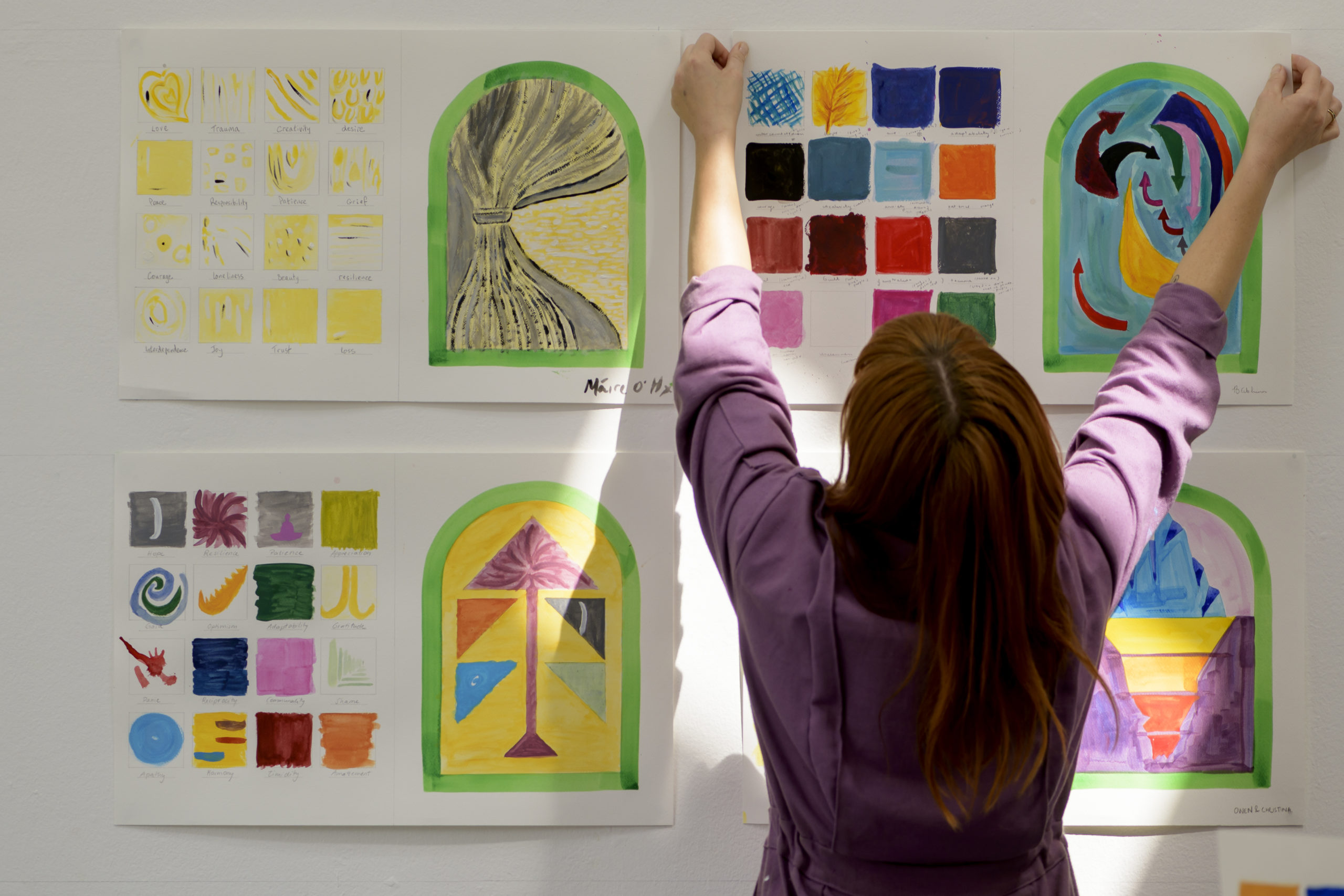
Once participants had completed their colour palettes and paintings, we put all the responses up on the walls of my studio at IMMA and took a moment to look at it together before going our separate ways. My job then began to interpret their works into a scheme for the courtyard. I included the work of every participant, through their colours as well as their designs. I individually hand-mixed every colour to match it exactly to those made during the workshops, in order to be able to give value to all the different emotions and colour responses we were able to access during the sessions.
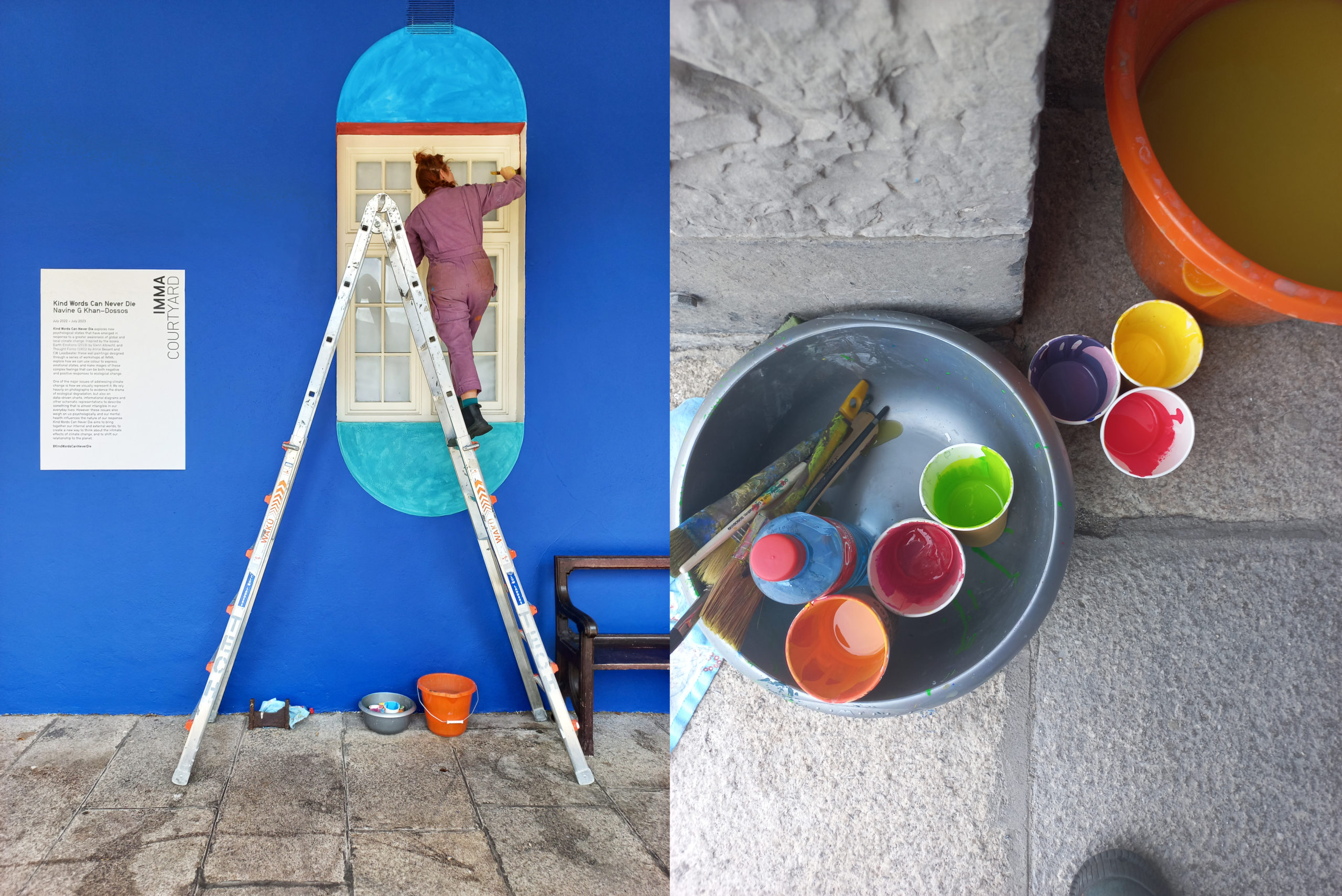
The courtyard is permeated with around forty doors and windows, and I wanted these portals to be part of the artwork. I decided to draw on specific colours made by participants to create semi-circular frames around each opening, making it into a painting in its own right. Each of these portals is named after the colours and the participant who created it, for instance Emmett’s Courage, Creativity and Joy, or Barbara’s Awe and Optimism. These portals exist alongside twelve large-scale paintings taken directly from the painted diagrams made in the afternoon sessions.

The painting of the Courtyard took me about three weeks to complete, and I worked almost every day during that time, always in sight of the general public. This is an important part of the work – people can see it being created, and understand the labour involved as well as the techniques. I felt very supported by visitors who stopped to chat, members of the IMMA team who brought me cups of tea and coffee, people out walking their dogs intrigued by the process. I had a lot of interesting conversations with people from all over the world about climate change, and their concerns about the environment, and what we can do to engage in these issues. These interactions are also part of my process of thinking about and creating my site-specific installations.
But perhaps the most rewarding moment was at the official opening of Kind Words Can Never Die, when many of the workshop participants returned to IMMA to see the fruits of our labours, and I was able to photograph several people in front of their paintings. To be able to share the work with those who had collaborated with me to make it, and for them to see themselves and their emotions reflected through the many colours of the work was a poignant moment for all. Here are some of those portraits.
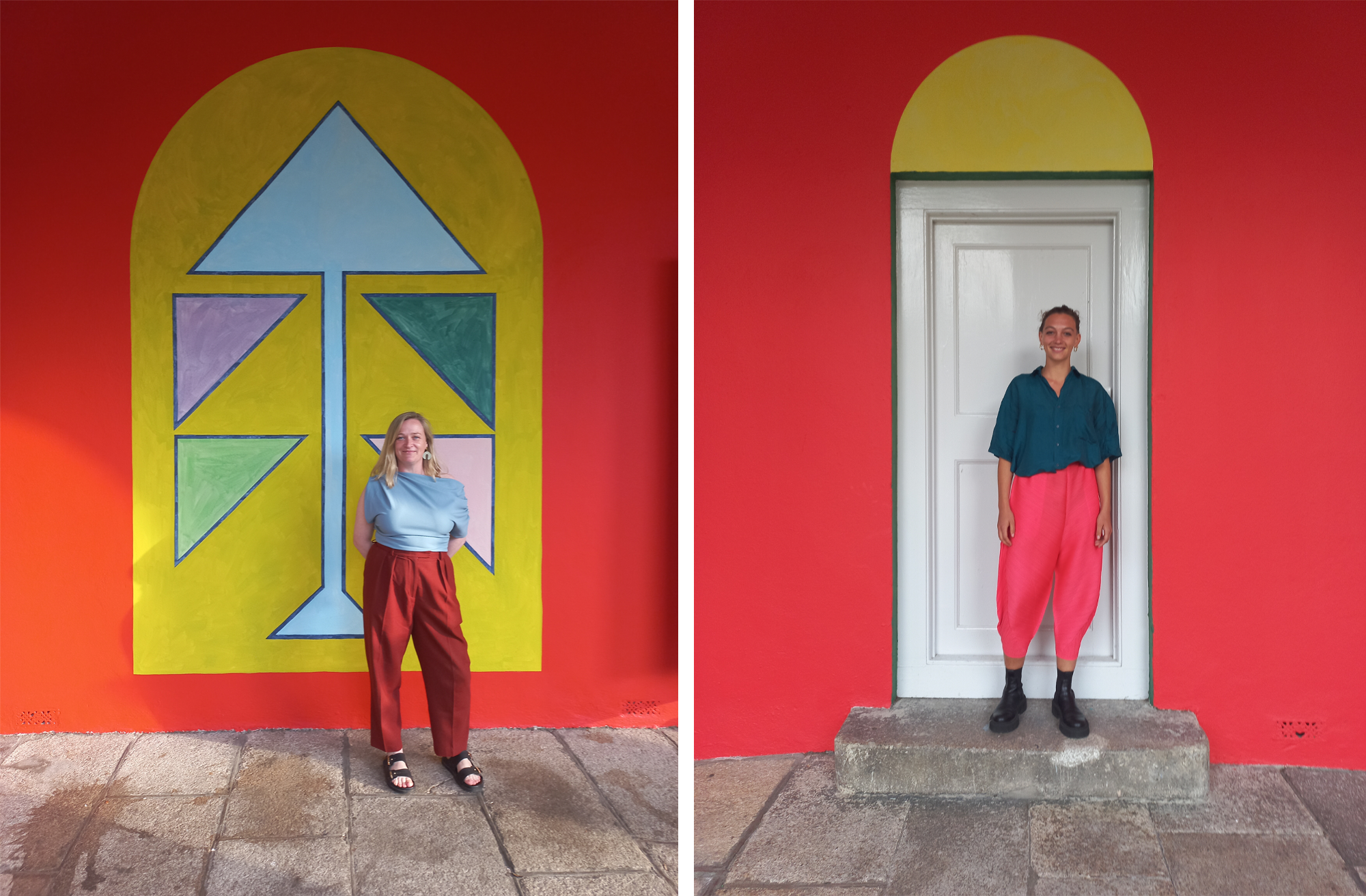
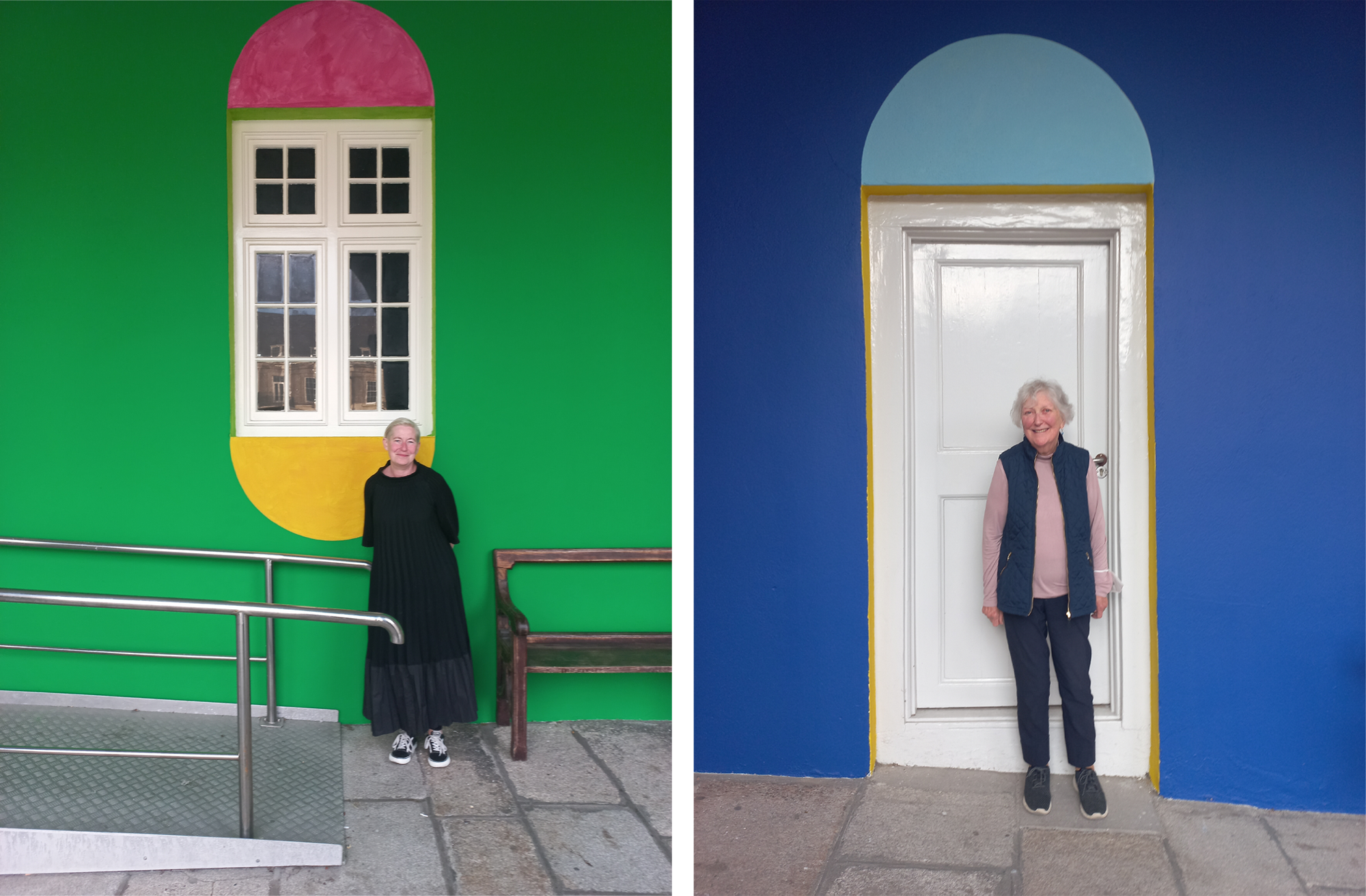
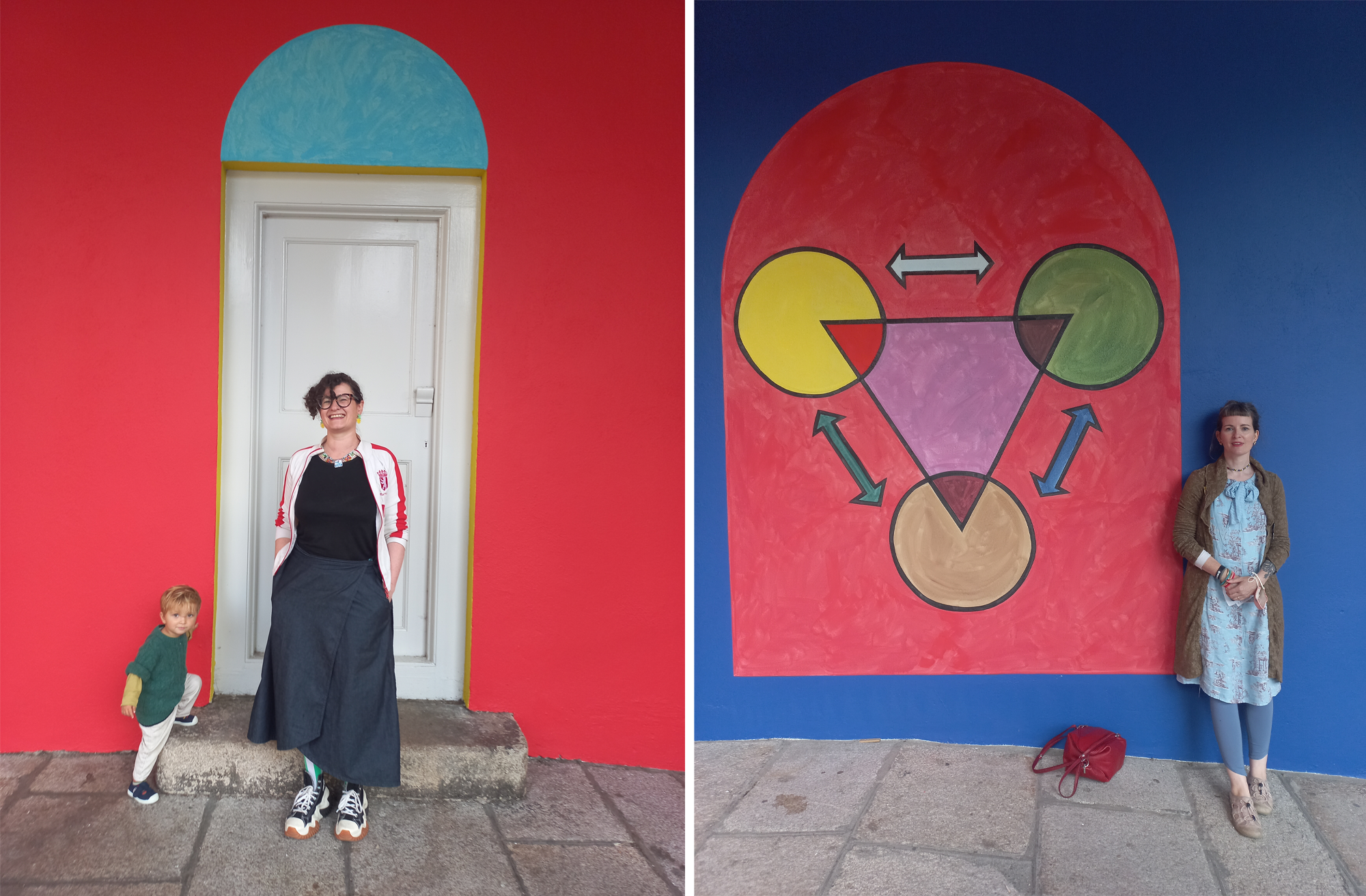
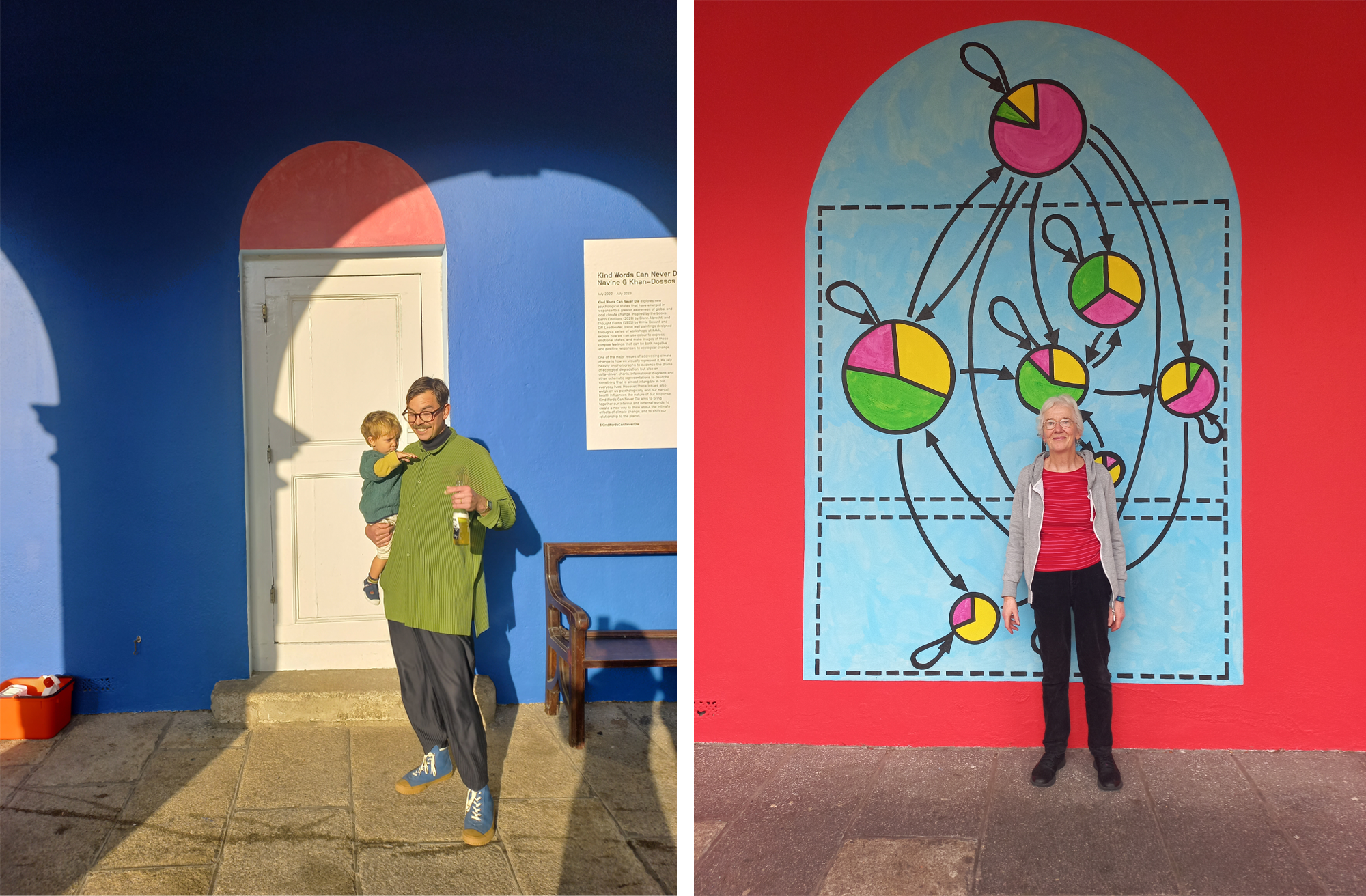
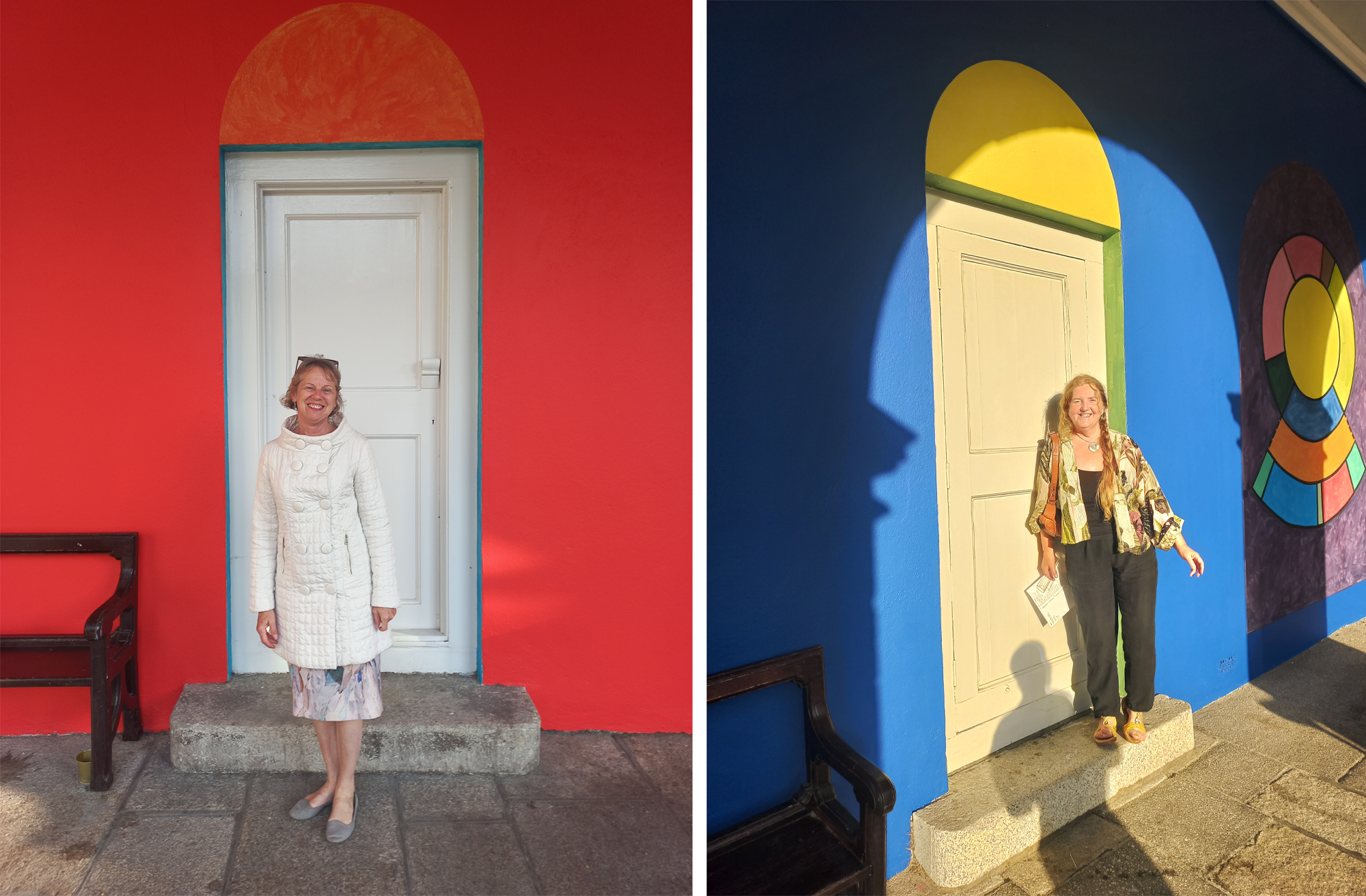
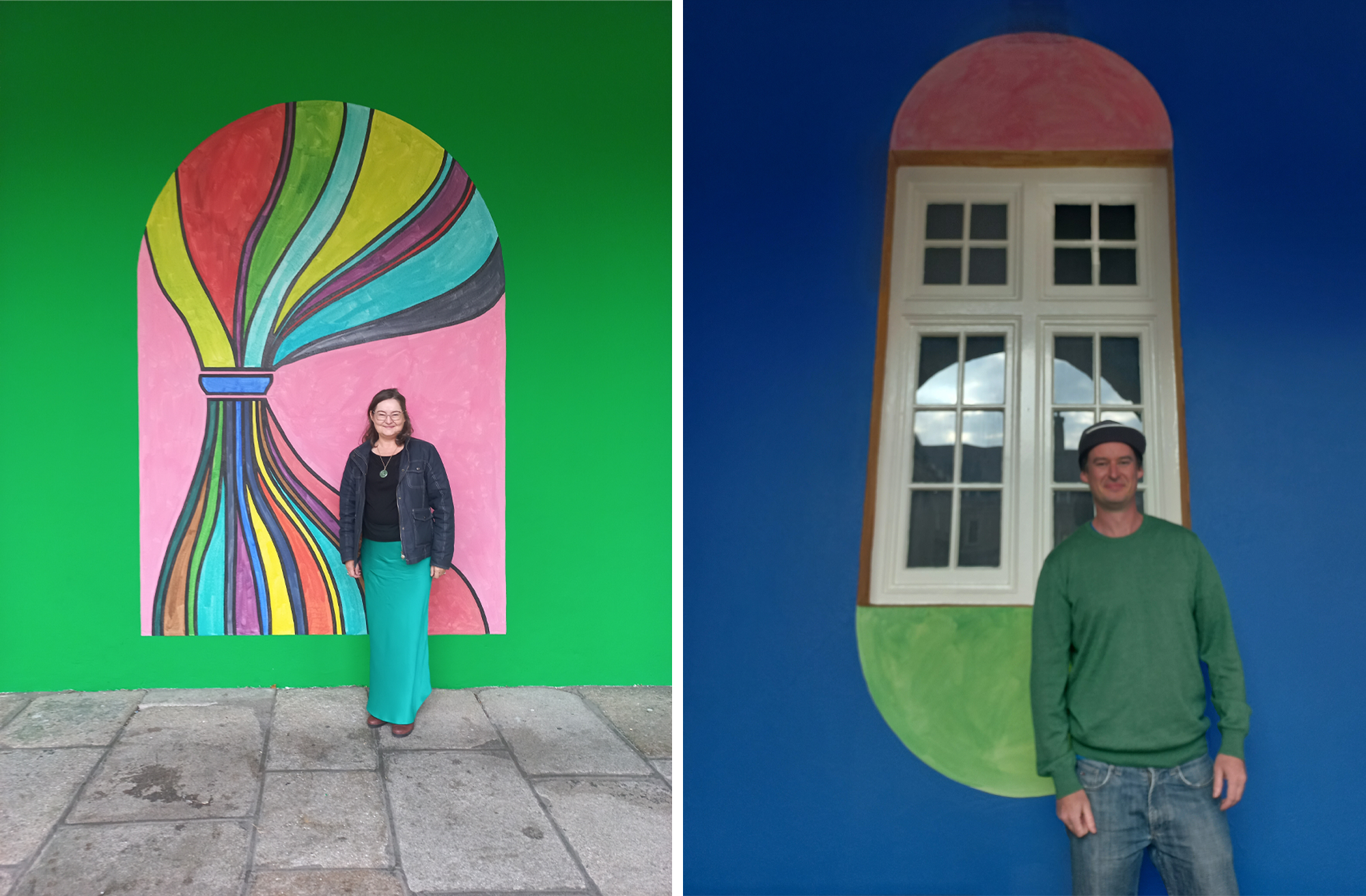
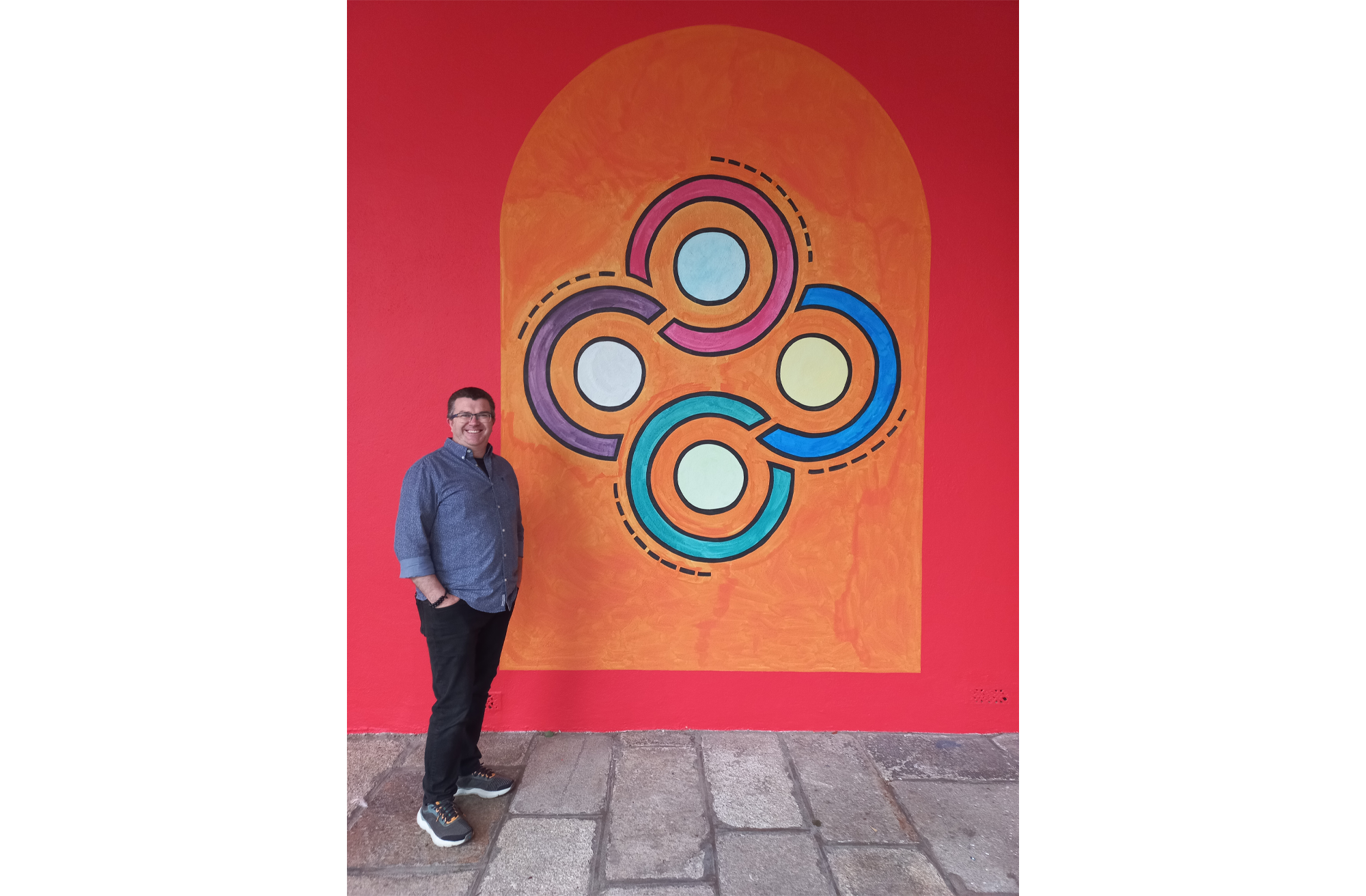
During the process of translating the workshop paintings into the courtyard mural, I kept a record of every colour I mixed on a single sheet of paper. Each colour is unique, and also notes the person who created it and what emotion it relates to. It is perhaps the most important part of the archive material of Kind Words Can Never Die, and I was excited to be able to make it into a limited edition print with IMMA, that is available through their shop. All the funds raised through sales of this edition will go towards supporting the museum’s ecological programming.
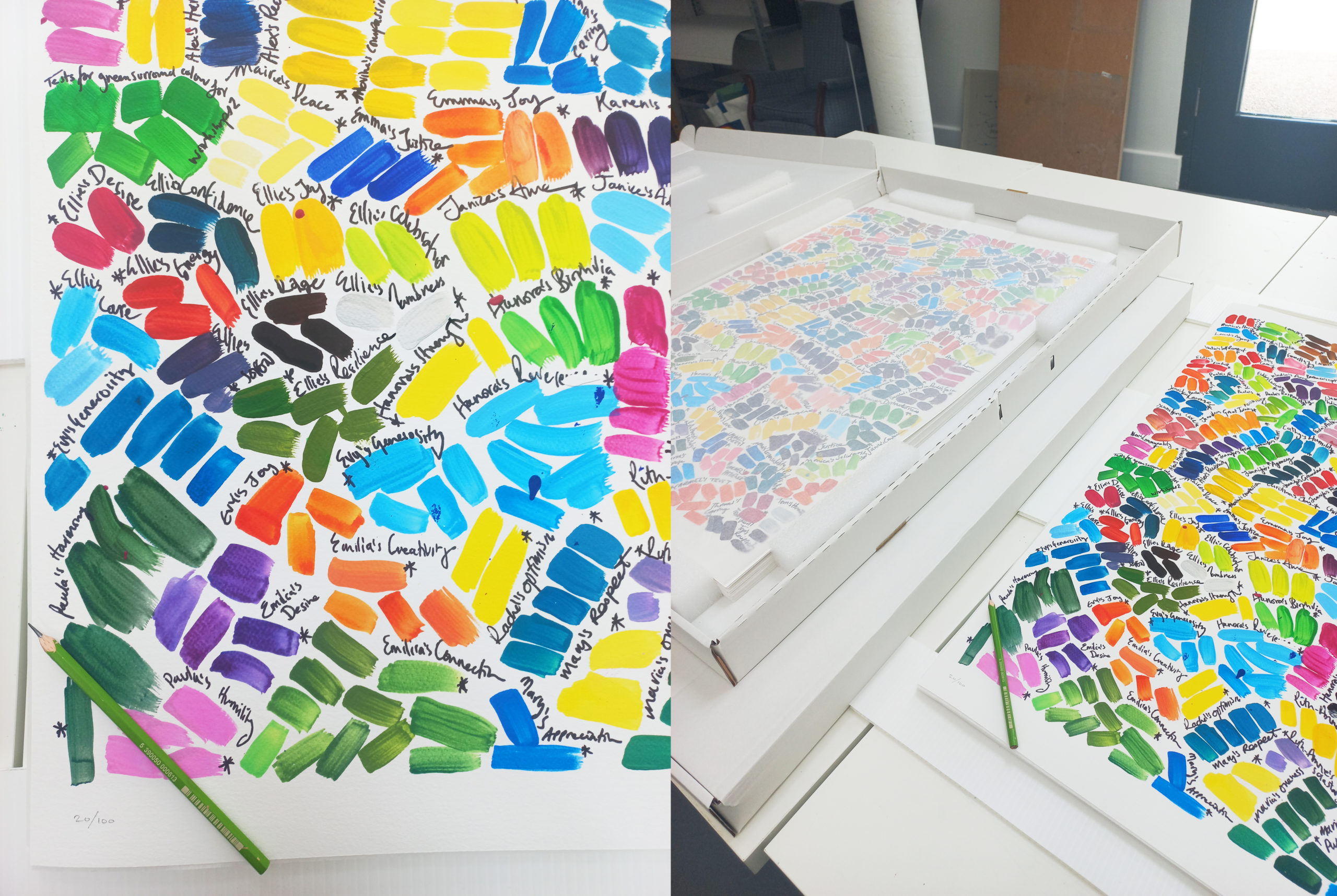
[i] This simple spoken Gaia meditation composed by John Seed and Joanna Macy, guides us into precise and close identification with the elements and with the evolving life-forms of Earth.
What are you? What am I? Intersecting cycles of water, earth, air and fire – that’s what I am, that’s what you are.
WATER – blood, lymph, mucus, sweat, tears, inner oceans tugged by the moon, tides within and tides without. Streaming fluids floating our cells, washing and nourishing through endless riverways of gut and vein and capillary. Moisture pouring in through and out of you, of me, in the vast poem of the hydrological cycle. You are that. I am that.
EARTH – matter made from rock and soil. It too is pulled by the moon as the magma circulates through the planet heart and roots suck molecules into biology. Earth pours through us, replacing each cell in the body every seven years. Ashes to ashes, dust to dust, we ingest, incorporate and excrete the earth, are made from earth. I am that. You are that.
AIR – the gaseous realm, the atmosphere, the planet’s membrane. The inhale and the exhale. Breathing out carbon dioxide to the trees and breathing in their fresh exudations. Oxygen kissing each cell awake, molecules moving in constant metabolism, interpenetrating. That dance of the air cycle, breathing the universe in and out again, is what you are, is what I am.
FIRE – fire from our sun that fuels all life, drawing up plants and raising the waters to the sky to fall again replenishing. The inner furnace of your metabolism burns with the fire that first sent matter/energy flaring out through space and time. This is the same fire as the lightening that flashed into the primordial soup, catalyzing the birth of organic life.
You were there I was there, for each cell of our bodies is descended in an unbroken chain from that event through the desire of atom for molecule, of molecule for cell, of cell for organism. In that sprawling of forms, death was born, born simultaneously with sex, before we divided from the plant realm. So in our sexuality we can feel ancient stirrings that connect us with plant as well as animal life. We come from them, an unbroken chain – through fish learning to walk the land, scales turning to wings, through migrations in the ages of life.
We have been but recently in human form. If Earth’s whole history were compressed in 24 hours beginning at midnight, organic life would begin only at 5pm … mammals emerge at 11.30pm … and from amongst them at only seconds to midnight, our species.
In our long planetary journey we have taken far more ancient forms than these we now wear. Some of these forms we remember in our mother’s womb, take on vestigial tails and gills, grow fins that turn to hands. Countless times in that journey we died to old forms, let go of old ways, allowing new ones to emerge. But nothing is ever lost. Though forms pass, all returns. Each worn-out cell consumed, recycled … through mosses, leeches, birds of prey…
Think to your next death. Give your flesh and bones back to the cycle. Surrender. Love the plump worms you will become. Launder your weary being through the fountain of life.
Beholding you I behold as well all the different creatures that compose you – the mitochondria in the cells, the intestinal bacteria, the life teeming on the surface of the skin. The great symbiosis that is you. The incredible coordination and cooperation of countless beings. You are that, too, just as your body is part of a much larger symbiosis, living in wider reciprocities. Be conscious of that give-and-take when you move among trees. Breathe your carbon dioxide to a leaf and sense it breathing fresh oxygen back to you.
Remember again and again the old cycles of partnership. Draw on them in this time of trouble. By your very nature and the journey you have made, there is in you the deep knowing of belonging. Draw on it now in this time of fear. You have earth-bred wisdom of your interexistence with all that is. Take courage and power in it now, that we may help each other awaken in this time of peril.
Categories
Up Next
Helio-a-go-go: Sarah Hayden reflects on Dennis McNulty's installation 'I reached inside myself through time'
Sun Aug 28th, 2022